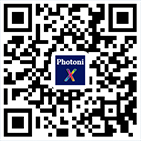| [1] |
MacKay DJC. Information theory, Inference and Learning Algorithms. Cambridge: Cambridge University Press; 2003.
|
| [2] |
Thomas M. Cover, elements of information theory. 2nd ed. Hoboken: Wiley; 2006.
|
| [3] |
Katz O, Heidmann P, Fink M, Gigan S. Non-invasive single-shot imaging through scattering layers and around corners via speckle correlations. Nat Photonics. 2014;8:784–90.
|
| [4] |
Zhipeng Y, Li H, Zhong T, Park J-H, Cheng S, Woo CM, et al. Controlling light in complex media via wavefront shaping: a versatile tool to deal with scattering in multidiscipline. Innovation. 2022;3(5):623–37.
|
| [5] |
Mitsuo T, Singh AK, Narayana ND, Giancarlo P, Wolfgang O. Holographic correloscopy-unconventional holographic techniques for imaging a three-dimensional object through an opaque diffuser or via a scattering wall: a review. IEEE Trans Industr Inform. 2015;12(4):1631–40.
|
| [6] |
Joseph W. Goodman, speckle phenomena in optics: theory and applications. Englewood: Roberts & Company Publishers; 2007.
|
| [7] |
Yılmaz H, Hsu CW, Yamilov A, Cao H. Transverse localization of transmission eigenchannels. Nat Photonics. 2019;13:352–8.
|
| [8] |
Yılmaz H, Hsu CW, Goetschy A, Bittner S, Rotter S, Yamilov A, et al. Angular memory effect of transmission Eigenchannels. Phys Rev Lett. 2019;123:203901.
|
| [9] |
Li S, Deng M, Lee J, Sinha A, Barbastathis G. Imaging through glass diffusers using densely connected convolutional networks. Optica. 2018;5:803–13.
|
| [10] |
Li Y, Xue Y, Tian L. Deep speckle correlation: a deep learning approach toward scalable imaging through scattering media. Optica. 2018;5:1181–90.
|
| [11] |
Horisaki R, Takagi R, Tanida J. Learning-based imaging through scattering media. Opt Express. 2016;24:13738–43.
|
| [12] |
Luo Y, Yan S, Li H, Lai P, Zheng Y. Towards smart optical focusing: deep learning-empowered dynamic wavefront shaping through nonstationary scattering media. Photon Res. 2021;9:B262–78.
|
| [13] |
Sun L, Shi J, Xiaoyan W, Sun Y, Zeng G. Photon-limited imaging through scattering medium based on deep learning. Opt Express. 2019;27:33120–34.
|
| [14] |
Lyu M, Wang H, Li G, Situ G. Learning-based lensless imaging through optically thick scattering media. Adv Photon. 2019;1(3):036002(1-10).
|
| [15] |
Rawat S, Wendoloski J, Wang A. cGAN-assisted imaging through stationary scattering media. Opt Express. 2022;30:18145–55.
|
| [16] |
Zhang X, Gao J, Song C, Zhang D, Zhuang S, Han S, Lai P, Liu H. Roles of scattered and ballistic photons in imaging through scattering media: a deep learning-based study. arXiv:2207.10263 [physics.optics]. https://doi.org/10.48550/arXiv.2207.10263.
|
| [17] |
Häusler G, Lange E. Feedback network with space invariant coupling. Appl Opt. 1990;29:4798–805.
|
| [18] |
Arguello H, Pinilla S, Peng Y, Ikoma H, Bacca J, Wetzstein G. Shift-variant color-coded diffractive spectral imaging system. Optica. 2021;8:1424–34.
|
| [19] |
Arigovindan M, Shaevitz J, McGowan J, Sedat JW, Agard DA. A parallel product-convolution approach for representing depth varying point spread functions in 3D widefield microscopy based on principal component analysis. Opt Express. 2010;18:6461–76.
|
| [20] |
Deng M, Li S, Zhang Z, Kang I, Fang NX, Barbastathis G. On the interplay between physical and content priors in deep learning for computational imaging. Opt Express. 2020;28:24152–70.
|
| [21] |
Moralis-Pegios M, Mourgias-Alexandris G, Tsakyridis A, Giamougiannis G, Totovic A, Dabos G, et al. Neuromorphic silicon photonics and hardware-aware deep learning for high-speed inference. J Lightwave Technol. 2022;40:3243–54.
|
| [22] |
Liu J, Chenghua F. MNIST data set recognition research based on TensorFlow framework. Int Core J Eng. 2021;7:410–4.
|
| [23] |
He Y, Duan S, Yuan Y, Chen H, Li J, Zhuo X. Semantic ghost imaging based on recurrent-neural-network. Opt Express. 2022;30:23475–84.
|
| [24] |
Yan Zhang, Steve Farrell, Michael Crowley, Lee Makowski, and Jack Deslippe. A Molecular-MNIST Dataset for Machine Learning Study on Diffraction Imaging and Microscopy. Biophotonics Congress: Biomedical Optics 2020 (Translational, Microscopy, OCT, OTS, BRAIN), OSA Technical Digest (Optica Publishing Group, 2020), paper JTh2A.28.
|
| [25] |
Zhang Z, Zheng Y, Tienan X, Upadhya A, Lim YJ, Mathews A, et al. Holo-UNet: hologram-to-hologram neural network restoration for high fidelity low light quantitative phase imaging of live cells. Biomed Opt Express. 2020;11:5478–87.
|
| [26] |
Feng J, Deng J, Li Z, Sun Z, Dou H, Jia K. End-to-end res-Unet based reconstruction algorithm for photoacoustic imaging. Biomed Opt Express. 2020;11:5321–40.
|
| [27] |
Deng J, Feng J, Li Z, Sun Z, Jia K. Unet-based for photoacoustic imaging artifact removal. Imaging and applied optics congress, OSA technical digest. Washington, DC: Optica Publishing Group; 2020. paper JTh2A.44.
|
| [28] |
Yu FTS, Jutamulia S, Yin S. Introduction to Information Optics: Academic Press; US. 2001. p. 73–5. ISBN 978-0-12-774811-5.
|
| [29] |
Gureyev T, Nesterets Y, de Hoog F. Spatial resolution, signal-to-noise and information capacity of linear imaging systems. Opt Express. 2016;24:17168–82.
|
| [30] |
Gureyev TE, Nesterets YI, de Hoog F, Schmalz G, Mayo SC, Mohammadi S, et al. Duality between noise and spatial resolution in linear systems. Opt Express. 2014;22:9087–94.
|
| [31] |
Mahalanobis A, Vijaya Kumar BVK, Sims SRF. Distance-classifier correlation filters for multiclass target recognition. Appl Opt. 1996;35:3127–33.
|
| [32] |
Kang S-J. SSIM preservation-based backlight dimming. J Display Technol. 2014;10:247–50.
|
| [33] |
Bakurov I, Buzzelli M, Schettini R, Castelli M, Vanneschi L. Structural similarity index (SSIM) revisited: a data-driven approach. Expert Syst Appl. 2022;189:116087.
|
| [34] |
Wang Z, Bovik AC, Sheikh HR, Simoncelli EP. Image quality assessment: from error visibility to structural similarity. IEEE Trans Image Process. 2004;13(4):600–12.
|
| [35] |
Liu H, Liu Z, Chen M, Han S, Wang LV. Physical picture of the optical memory effect. Photon Res. 2019;7:1323–30.
|
| [36] |
Zhang R, Jinye D, He Y, Yuan D, Luo J, Daixuan W, et al. Characterization of the spectral memory effect of scattering media. Opt Express. 2021;29:26944–54.
|
| [37] |
Scheibler S, Ackermann M, Malavalli A, Aegerter CM. Extending the field of view of imaging behind turbid media beyond the memory effect. OSA Continuum. 2019;2:1468–73.
|
| [38] |
Guo E, Zhu S, Sun Y, Bai L, Zuo C, Han J. Learning-based method to reconstruct complex targets through scattering medium beyond the memory effect. Opt Express. 2020;28:2433–46.
|
| [39] |
Levene M, Steckman GJ, Psaltis D. Method for controlling the shift invariance of optical correlators. Appl Opt. 1999;38:394–8.
|
| [40] |
Silvera E, Kotzer T, Shamir J. Adaptive pattern recognition with rotation, scale, and shift invariance. Appl Opt. 1995;34:1891–900.
|
| [41] |
Yanny K, Monakhova K, Shuai RW, Waller L. Deep learning for fast spatially varying deconvolution. Optica. 2022;9:96–9.
|
| [42] |
Horisaki R, Tanida J. Multi-channel data acquisition using multiplexed imaging with spatial encoding. Opt Express. 2010;18:23041–53.
|
| [43] |
Liu H, Lai P, Gao J, Liu Z, Shi J, Han S. Alternative interpretation of speckle autocorrelation imaging through scattering media. Photonic Sensors. 2022;12(3):220308.
|









 下载:
下载:



